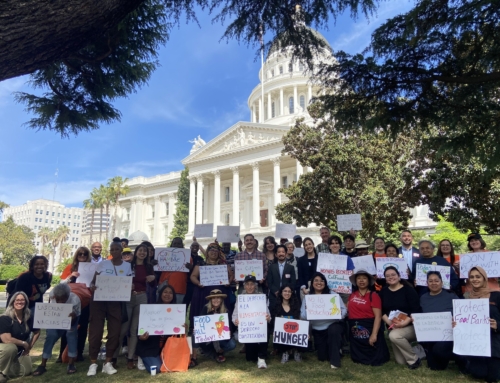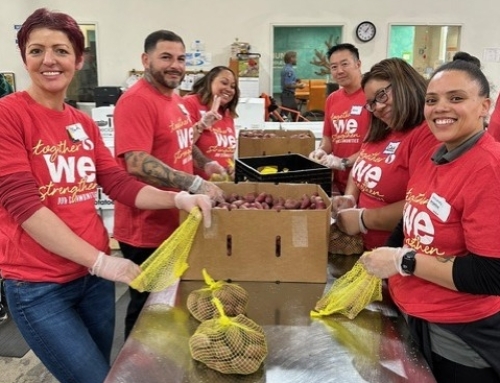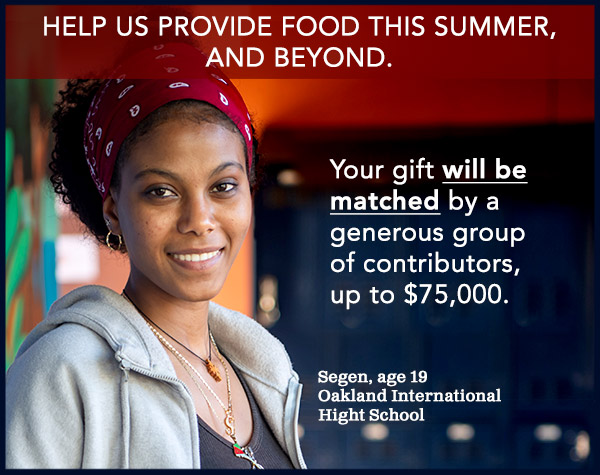In fact, summer is one of the busiest times of the year for food banks.
There are two surprising facts when it comes to children and our work:
First is that the need is highest during times when schools are closed — like summer break. And second is that children represent the largest group of any that we serve.
This summer, we’ve seen the number of calls to our emergency food helpline double and heard from parents that need extra support while their children are home for the break. For many of us, summer isn’t so much a time for vacations and time at the pool as it is a time when impossible choices need to be made to survive the meal gap.
Alameda County Community Food Bank invests a lot of resources into childhood hunger programming, and for good reason: Children who are living with food insecurity are more likely to develop serious health conditions, experience stunted development, and hospitalizations. Exposure to food insecurity and hunger is linked to childhood mental health challenges – including anxiety and aggression – which can further limit a child’s ability to focus in school and chase their dreams.
Frick United Academy — a middle school in Oakland, and one of our 400 partner organizations — hosts monthly food distributions and sees firsthand the impact of hunger on our community’s youth. “When a student comes to school hungry it makes it really hard to focus on anything else,” says Jaymie Lollie, Frick’s Community School Manager. “You literally may not have enough fuel in your body to be your best physically, let alone mentally or emotionally… Students should be able to be joyful at school, and it’s so hard to be joyful when you’re hungry.”
Arlan Murrillo, Director of Client Services at ACCFB and a father of two, underscores the importance of being connected to the nourishing food we all need in order to thrive: “If you’re hungry and don’t get the food you need – it cuts you off from so many different things and living. Survival mode gets tiring. In the moment, it can be debilitating. When you’re hungry, you’re very in tune with all the other struggles happening.”
The Food Bank is spending $1.7 million purchasing food each month, including fresh, healthy produce for growing children. That’s up from the pre-pandemic average of $250,000 a month and it’s not getting any easier to meet the sustained elevated needs of the community. Join us and help invest in a brighter future for our community of children by donating (Hurry! All gifts will be matched until July 15!) volunteering (We *urgently* need groups to join us on weekdays), or advocating to protect programs that address childhood hunger. We need your support now more than ever – this summer, and all year.
Jaymie emphasizes, “Hunger doesn’t have a season. It doesn’t end because it’s summertime, or we’re on a holiday break. Our community is deserving of easy-to-access food resources year-round.”




